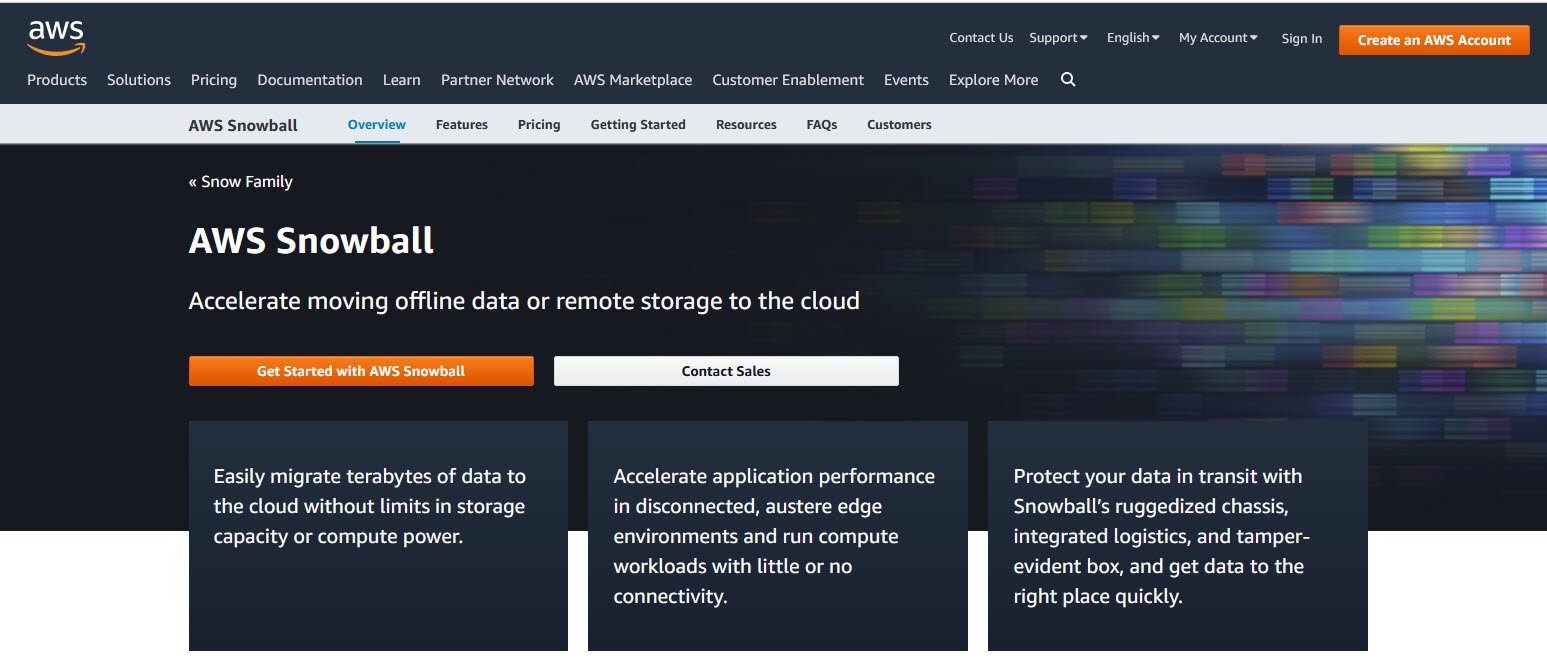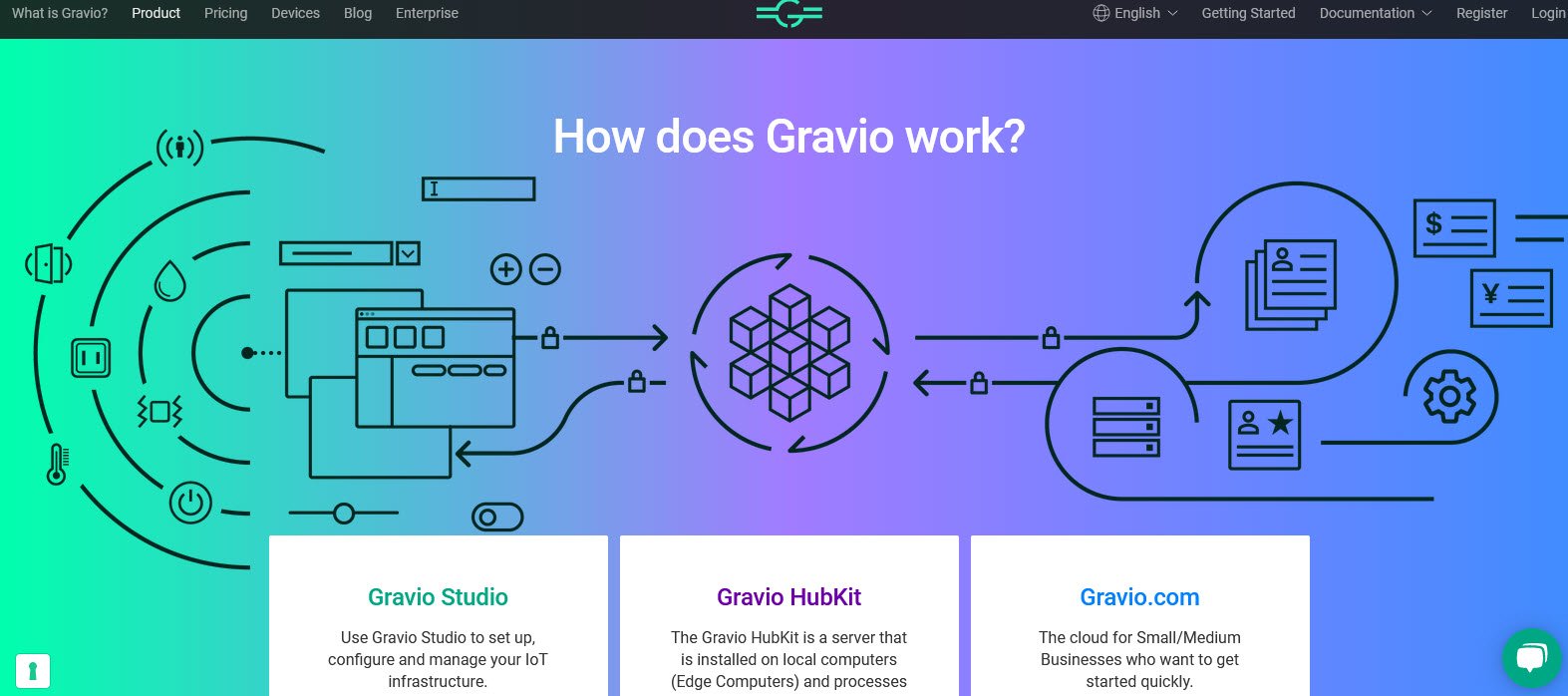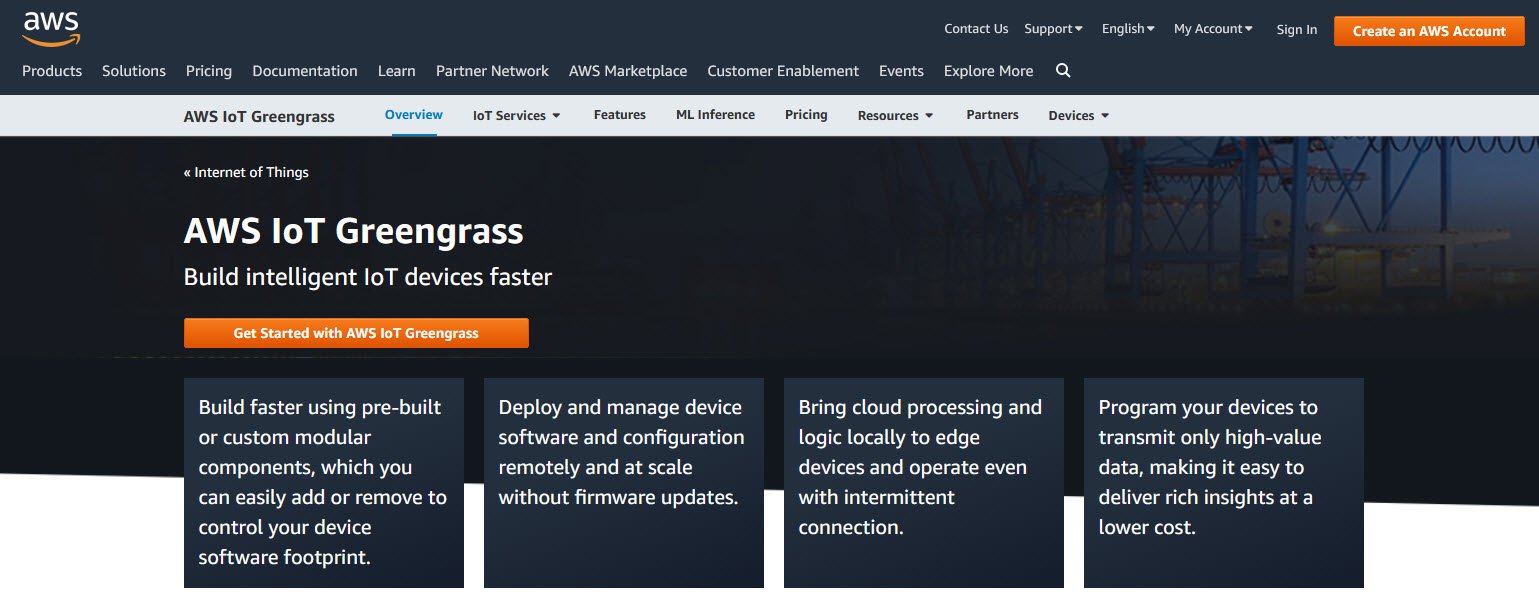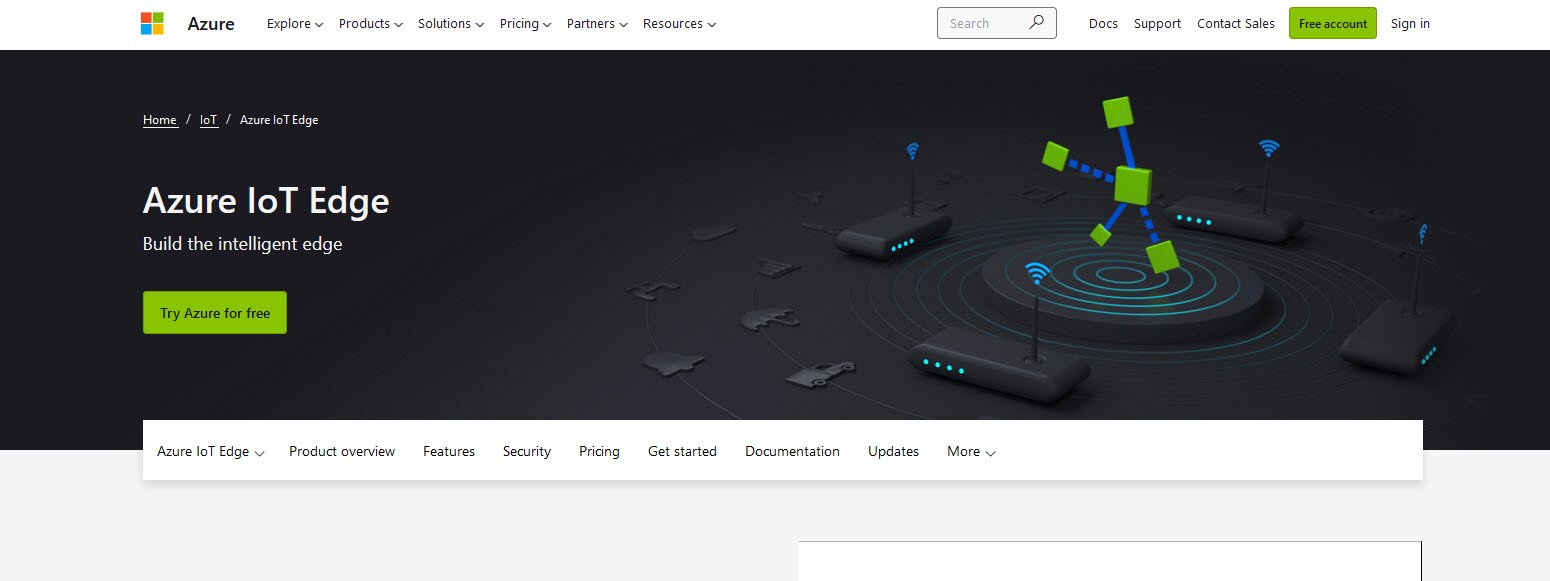IoT edge platforms help facilitate localized computer processing on IoT devices. These devices constantly analyze streams of data including information about networks, actions, and anything else the device is connected to or interacting with. IoT edge platforms provide containerized modules to deploy on IoT devices, a runtime to execute actions locally, and a cloud-based interface for monitoring and management.
These technologies are used by businesses to reduce bandwidth usage for IoT devices, respond faster to malfunctions, and reduce overall network traffic. Shifting IoT analytics to the edge can also improve security by reducing data transfer over networks.
- AWS Snowball
- Gravio Edge IoT Platform
- AWS Greengrass
- Azure IoT Edge
1. AWS Snowball
AWS Snowball is a petabyte-scale data transfer service built around a secure suitcase-sized device that moves data into and out of the AWS Cloud quickly and efficiently. Encryption is required, protecting your data both at rest and in transit.Data can be imported and exported between your local environments and S3.
Network adapters that can transfer data at up to 100 GB/s. Jobs begin in the AWS Management Console, when a device (or devices) are shipped to your designated site to be filled up with data. Once the job is finished, the device is shipped back to AWS and the data put into your S3 bucket. For compute functionality, up to 80 TB of usable storage space, 24 vCPUs, and 32 GiB of memory are available. A single Snowball Edge Storage Optimized device can transfer up to 100 TB.
Typical transfer times are about a week from start to finish. Snowballs are commonly used to ship terabytes or petabytes of analytics data, healthcare and life sciences data, video libraries, image repositories, backups, and archives as part of data center shutdown, tape replacement, or application migration projects.

2. Gravio Edge IoT Platform
Gravio is an IoT platform connecting sensors and computer vision at the edge. Asteria’s Gravio is a simple IoT edge platform. Gravio incorporates industry standards such as Zigbee, Bluetooth, HTTP, MQTT, and ONVIF.
It’s relying on standard protocols such as, amongst others, Zigbee, Bluetooth, TensorFlow, HTTP, MQTT or ONVIF. Gravio distinguishes itself by running at the edge, providing its own back-end system, which you can also deploy on-premise, and Gravio by combining physical sensors such as contact sensors, buttons, motion detection, co2, etc with software sensors such as USB or ONVIF cameras combined with TensorFlow based object detection.Gravio also makes use of the power of computer vision and machine learning via TensorFlow.
Gravio includes its own back-end system, which can be deployed on-premises or in your own private cloud

3. AWS Greengrass
AWS Greengrass is software that lets you run local compute, messaging, data caching, sync, and ML inference capabilities for connected devices in a secure way.
With AWS Greengrass, connected devices can run AWS Lambda functions, keep device data in sync, and communicate with other devices securely – even when not connected to the Internet. Using AWS Lambda, Greengrass ensures your IoT devices can respond quickly to local events, use Lambda functions running on Greengrass Core to interact with local resources, operate with intermittent connections, stay updated with over the air updates, and minimize the cost of transmitting IoT data to the cloud.

4. Azure IoT Edge
Azure IoT Edge is a fully managed service that delivers cloud intelligence locally and makes hybrid cloud and Internet of Things (IoT) solutions a reality.




